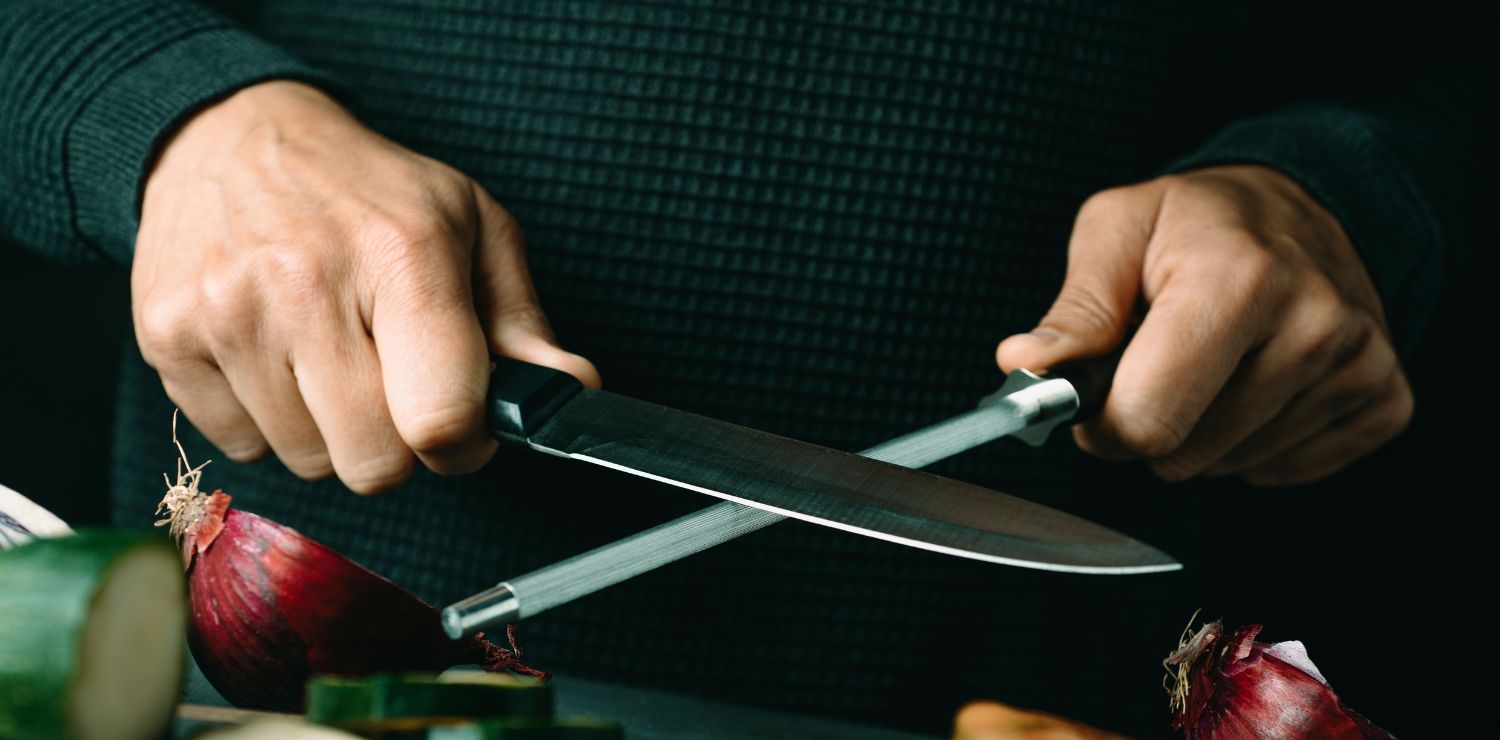The Complete Guide to Using Sharpening Steels
Dull knives are every avid cook’s nightmare. Luckily, there’s a simple and effective solution to restoring the sharpness of your beloved blades: sharpening steels. In this article, we’ll explore the art of sharpening, highlighting the different varieties of sharpening steels, proper techniques, and tips for keeping your knives in tip-top shape.
Types of sharpening steels
1. Steel rifle
Steel sharpening steels, also called steel honing steels, are among the most common. They have a steel rod that the knife is rubbed against to straighten the dull edge. This type of sharpening steel is ideal for stainless steel knives.
2. Ceramic rifle
Ceramic sharpening rods are used primarily for sharpening ceramic knives. The ceramic rod is harder than steel, providing a more precise and durable sharpening for ceramic blades.
3. Diamond Rifle
Diamond sharpening steels are equipped with rods coated with diamond particles. These abrasive particles make this tool particularly effective for quickly sharpening dull knives.
Proper sharpening techniques
1. Maintain the correct angle
Angle is crucial when sharpening. Hold the steel and knife so that a constant angle is maintained between the blade and the shank of the steel. An angle of about 20 degrees is generally recommended.
2. Use a steady motion
Run the knife blade along the shank of the sharpening steel in a smooth, even motion. Start at the base of the blade and work your way up toward the tip. Repeat this on each side of the blade for an even sharpening.
3. Avoid excessive pressure
Avoid applying excessive pressure. Sharpening should be a controlled process. Too much pressure can damage the blade or the steel.
Tips for optimal sharpening
1. Regular sharpening
It is recommended to sharpen your knives regularly, even if they do not appear dull. This extends the life of the blade and maintains optimal performance.
2. Cleaning after sharpening
After each sharpening session, carefully clean the sharpening steel to remove metal particles. A clean sharpening steel extends the life of the abrasive rod.
3. Adapt the rifle to the knife
Choose the type of sharpening steel according to the material of your knife blade. A suitable sharpening steel ensures optimal sharpening without damaging the blade.
Conclusion
Sharpening steels are essential tools for any knife-conscious kitchen enthusiast. By understanding the different types of sharpening steels and mastering the proper techniques, you can keep your knives in tip-top condition for an effortless cooking experience. Invest the time in regular sharpening, and you’ll be rewarded with razor-sharp blades ready to take on any culinary task. The art of sharpening isn’t just a skill; it’s a way to ensure a high-performance, enjoyable kitchen.







The Art of Cutting: A Complete Guide to Using Bread Knives
The Art of Knife Cleaning: Why Avoiding the Dishwasher is Essential